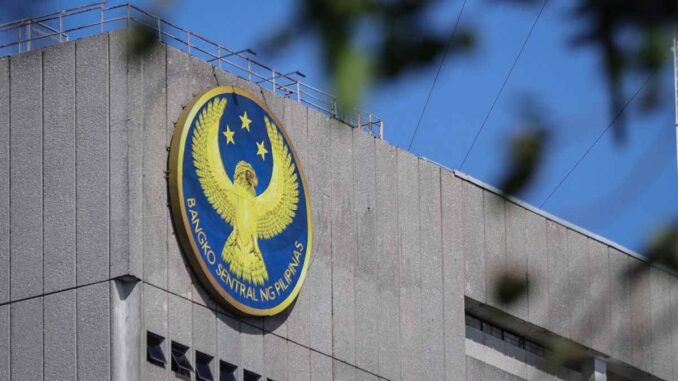
THE Bangko Sentral ng Pilipinas (BSP) will likely deliver one more 25-basis-point (bps) rate cut in December, but a pause is also a possibility should circumstances change for the worse in the next two months.
“Another rate cut from the BSP this year remains the base case given the favorable outlook for inflation,” Bank of the Philippine Islands (BPI) senior economist Emilio Neri said in a commentary.
“However, there is a small probability of a pause, especially if developments abroad continue to exert pressure on the peso,” he added.
The BSP’s policymaking body on Wednesday cut key rates by 25 bps as expected, mirroring an August reduction that kick-started an easing cycle.
The central bank’s benchmark rate now stands at 6.0 percent, down from the 17-year high of 6.5 p ercent reached in October last year as monetary authorities sought to keep inflation under control.
From January 2023’s 14-year peak of 8.7 percent, consumer price growth has now fallen to 1.9 percent as of last month, below the BSP’s 2.0- to 4.0-percent target.
The short-term outlook remains favorable, and BSP Governor Eli Remolona Jr. said on Wednesday that the Monetary Board’s decision to cut anew was “based on its assessment that price pressures remain manageable.”
The risk-adjusted forecast for this year was trimmed to 3.1 percent from 3.3 percent, but those for 2025 and 2026 were raised to 3.3 percent and 3.7 percent, respectively, from 2.9 percent and 3.3 percent.
The upside risks were said to emanate from potential adjustments in electricity rates and higher minimum wages in areas outside Metro Manila.
Given the currently favorable inflation outlook, Neri said that the BSP has the room to cut rates further but added that “being aggressive might not be prudent.”
The country’s external position is not as strong as before, he said, which makes the peso less resilient to external risks and developments.
The currency, which fell to the P58:$1 level earlier this year after Remolona indicated that the BSP would cut rates ahead of the US Federal Reserve, initially gained following the August easing.
It even returned to P55:$1 territory last month but has since been weakening, on Tuesday closing at an over two-month low of P57.865 to the greenback.
Neri also said that the outlook for inflation could change quickly given the current global environment and that domestic supply shocks could easily materialize.
“A cautious approach to rate cuts might be needed in order to offset these risks and ensure stability in the markets,” he said.
HSBC Global Research economist Aris Dacanay, meanwhile, also said that a 25-bps cut would probably be announced during the last policy-setting meeting on December 19, with three more to follow in the first half of 2025.
“This … implies that the easing cycle will likely end in the second quarter of 2025 with the policy rate at 5.00 percent — a rate that is higher than pre-pandemic levels,” he added.
The rate cuts and lower bank reserve requirements due to take effect later this month, Dacanay continued, are aimed at boosting economic growth by encouraging borrowing and freeing up bank funds for lending.
The actual economic impact, however, will take time, and he said that potential borrowers could wait until the BSP’s easing cycle ends.
ANZ Research economist Arindam Chakraborty also forecast a December rate cut, noting that the “subdued risk-adjusted inflation forecast for 2024 and the first half has added to the BSP’s optimism on its ability to cut rates.”
A “persistently weak private consumption and improving inflation outlook in the near term” will further incentivize the BSP to cut rates further to 5.0 percent next year, he added.


Be the first to comment